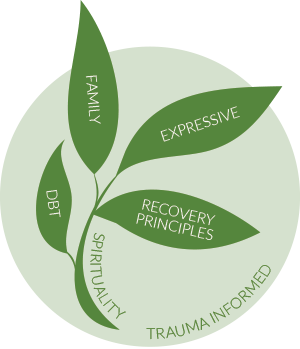Binge eating disorder is a potentially life-threatening disorder. Individuals who struggle with binge eating disorder frequently consume abnormally large amounts of food and feel as though they’re unable to stop eating, which can result in tragic consequences.
Women and girls who are suffering from binge eating disorder generally feel embarrassed about overeating and pledge to stop. But the impulses and urges to continue binge eating are often too much to ignore.
You can learn more details about binge eating disorder by visiting the Mayo Clinic.
Common Signs of Binge Eating Disorder
Women and girls who have binge eating disorder often display behaviors that can be considered warning signs by friends and family members. These actions do not necessarily mean that she is suffering from binge eating disorder, but they merit a conversation.
Some examples of binge eating disorder warning signs include:
- Eating when not hungry
- Eating atypically large amounts of food within a two-hour window
- Dieting, possibly without weight loss
- Eating alone
- Feeling depressed, ashamed, or guilty about eating
- Fear of eating in public
- Frequently looking in the mirror
- Eliminating entire food groups from diet
Common Symptoms of Binge Eating Disorder
The symptoms of binge eating disorder go a step beyond the warning signs. For any woman or girl who displays some of the symptoms listed below, professional intervention is likely necessary.
It is important to note that while some women and girls who have binge eating disorder are overweight, those who maintain an average weight can still be susceptible.
Some examples of binge eating disorder symptoms include:
- Noticeable fluctuations in weight, whether up or down
- Breathing problems
- Cardiovascular concerns
- Trouble focusing
- Stomach cramps or additional gastrointestinal problems
Common Causes & Risk Factors of Binge Eating Disorder
There is little known about the specific causes of binge eating disorder, which typically begins in adolescence or young adulthood. However, some studies show that there are a few genetic and environmental risk factors that can lead to the development of binge eating disorder symptoms. These include:
- Genetic: Women and girls who have a family history of binge eating disorder, particularly in parents or siblings, are more prone to developing symptoms of binge eating disorder. Other factors may include a family or personal history of certain types of mental illness, and gender, as binge eating disorder is more common among women and girls.
- Environmental: Women or girls who have a history of dieting or restricting calories are more prone to developing binge eating disorder symptoms, as are those who experience stress or poor body self-image. Additional environmental risk factors include having parents or friends who display extreme dieting tendencies, and a childhood history of bullying or being teased about weight.
Binge Eating Disorder Statistics
Binge eating disorder research is in its relative infancy, but there are a number of credible studies available. Below are some of the most revealing statistics about binge eating disorder:
- According to the Diagnostic and Statistical Manual of Mental Disorders, Fifth Edition (DSM-5), binge eating disorder is twice as common among U.S. adult women (1.6%) as among men (0.8%).
- The lifetime prevalence of binge eating disorder is 2.8% among American adults age 18 and older, according to the National Institute on Mental Health (NIMH).
- Also, according to ANAD, nearly 1 in 10 individuals who experience binge eating disorder symptoms have a co-occurring substance use disorder.
Effects of Binge Eating Disorder
The impact of binge eating disorder can be severe. Among the most common effects you might experience if binge eating disorder is not treated include:
- Self-harm
- Suicidal ideation
- Suicide attempts
- Diabetes or joint problems
- Loss of job or failure in school
- Development of substance use disorders
- Social isolation
Added weight and subsequent negative health effects are often a concern with binge eating disorder. Purging, fasting, and excessive exercise are not commonly associated with binge eating disorder, so some women and girls who are struggling with these behaviors often gain weight until they receive proper care.
Generally speaking, the severity of binge eating disorder depends on how often episodes of bingeing occur each week. According to the Diagnostic and Statistical Manual of Mental Disorders, Fifth Edition (DSM-5), the diagnostic level of severity is as follows:
- Mild: 1-3 binge eating episodes per week
- Moderate: 4-7 binge eating episodes per week
- Severe: 8-13 binge eating episodes per week
- Extreme: 14 or more binge eating episodes per week
Binge Eating Disorder Relapse
Some studies show that anywhere from 20% to 50% of individuals who have an eating disorder like binge eating disorder relapse, and things like stress, sleep deprivation, and new routines can trigger you to fall back into old habits.
Food is a significant part of our everyday routines, so triggers will never fully disappear, but it’s important to be able to manage your responses. Meal planning and food logs can help, along with making a list of things to think about when a crisis hits that you always have available.
Make sure to have a list of individuals you are comfortable talking to, including current or former caregivers. If you find yourself engaging in the same behaviors that contributed to the development of binge eating disorder symptoms before, it’s vital to be able to reach out for help immediately.
Common Underlying or Co-Occurring Disorders
It’s very common for people who struggle with symptoms of binge eating disorder to also suffer from other types of mental illness or addiction concerns. With overlapping diseases, these struggles can be more intense and harder to manage.
The professionals at Timberline Knolls understand the potential severity of co-occurring disorders. During your time in our care, they will address any additional challenges you face along with binge eating disorder.
To learn more about the types of concerns that can occur alongside binge eating disorder, we recommend visiting Eating Disorder Hope, an organization that offers hope, information, and resources to individuals whose lives have been impacted by binge eating disorder.
This content was reviewed and approved by the clinical staff at Timberline Knolls.







